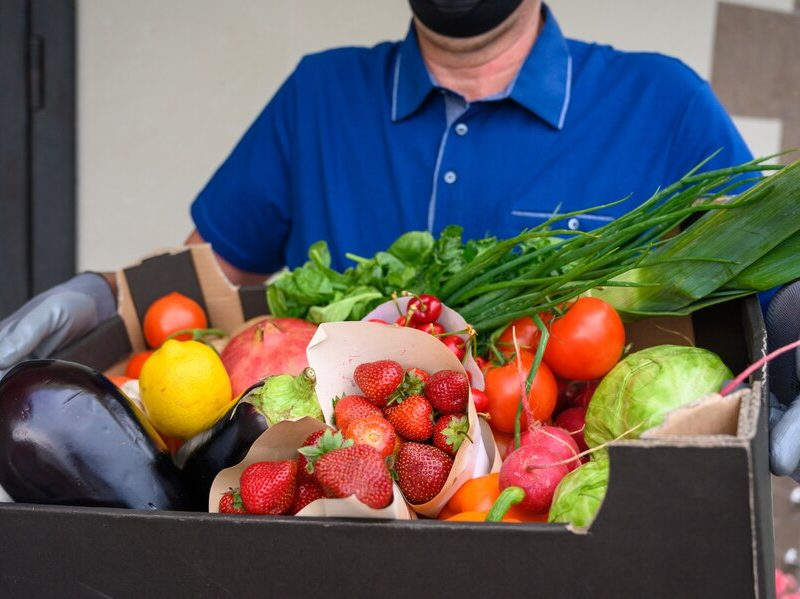As we will identify below, DoorDash is one of the growing players in the food delivery services market. A good chronicle of Lehman Brothers’ structure may help us better understand how it has reached such tremendous heights and can remain sustainable in a relatively rigid market environment. This will further elucidate the nature of its operations, how it earns revenue, and the aspects that make DoorDash stand out from competitors.
What is DoorDash?
Thus, DoorDash is an online platform for ordering food directly from customers’ chosen local and Interstate eateries. Initially created in 2013 by Tony Xu, Stanley Tang, Andy Fang, and Evan Moore, DoorDash delivers food orders to consumers in over 4000 cities across the USA, Canada, Australia, and Japan. Thanks to the “Dashers” label on the service’s website or mobile application, customers can place food orders and deliver them by a fleet of independent contractors.
Why is DoorDash successful?
Several factors contribute to DoorDash’s success:
- Extensive Network: DoorDash has many restaurants that offer many options in each state.
- User-Friendly App: The app’s ease of use means that customers do not struggle when ordering, finding out where their delivery is, or planning how to approach the driver.
- Efficient Logistics: Established as a delivery firm, DoorDash has a sophisticated algorithm for reaching clients’ homes quickly.
- Partnerships and Promotions: Advertising and establishing business relationships with various restaurants, plus appealing promotions for loyal customers, enable accomplishing the above goals.
Features of DoorDash’s
- Wide Selection of Restaurants: When it comes to choosing restaurants, DoorDash connects restaurant partners, both independent and national franchises, with varied types of foods.
- DashPass Subscription: Doorstep delivery is available for a monthly subscription fee, and some subscribers receive additional benefits, such as reduced service fees.
- Real-Time Tracking: The loophole often allows customers to monitor the progress of their order in real-time, from preparation to delivery.
- Group orders allow many people to order the same items and collect them at a central place, such as the workplace or home, for instance, for lunch.
- Contactless Delivery: Perhaps, especially given the COVID-19 pandemic, this feature makes great sense to be safely and hygienically delivered.
What makes DoorDash stand out?
- Market Penetration: The significant coverage and markets in urban and suburban settings make DoorDash an able contender.
- Technology Integration: Complex algorithms and big data analytics help increase delivery and customer satisfaction.
- Customer Support: Terminal consumer support guarantees optimal interaction with consumers and quick issue-solving in disagreements, thus positively influencing customer loyalty.
- Customizable Options: Customer convenience includes meeting the deliveries and scheduling their orders, including pre-ordering and choosing delivery times.
Business Model of DoorDash
Customer, restaurant, and Dasher are the three legs of the tripartite governance structure that makes up DoorDash.
As explained in detail, here is how it works:
- Customer Orders: It starts when a customer from the restaurant owner’s target demographic orders food from a restaurant they want using the DoorDash app or website.
- Restaurant preparation: After placing the order, the restaurant acknowledges it and delivers the prepared meal.
- Dasher Assignment: The algorithm pairs a nearby or available Dasher with the delivery, established considering factors including proximity, time, and capacity.
- Delivery: The Dasher takes the customer’s order from any restaurant and drops off the food at the required location.
- Payment: Finally, DoorDash pays the total bill, which comprises the amount for the orders, delivery fees, service fees, and the tip to the Dasher, if any.
DoorDash Business Model: How Does It Make Money?
DoorDash generates revenue through several streams:
Commissions: DoorDash collects a commission from restaurants for every sale made through its platform, and this commission fee can be between 15% and 30% of the total value of the orders.
Delivery Fees: There is also an additional delivery fee, depending on the distance, day of the week or time on any particular day.
Service Fees: A supplementary charge for services also helps meet every order’s functional requirements.
DashPass Subscription: A commission from members for a monthly subscription fee for DashPass gives a constant inflow of revenue.
Advertising: Consumers can book their tables with restaurants directly on the platform, while restaurants can pay for premium and advertising spots.
The Future of DoorDash
Recent developments show that DoorDash is not restricted to delivering food and groceries but is venturing into providing other services. The company has expanded its operations. For example, it operates in grocery delivery, working alongside some stores to deliver customer supplies. Also, the company has discussed automated delivery services, such as drones and robots, to avoid costs. In particular, the firm’s primary goals include technological development and market dominance. Therefore, DoorDash will remain a leader in the on-demand delivery niche.
Conclusion
DoorDash is a significant food delivery player born from an efficient business model, a broad network, and constant evolution. This leads to a reliable, consumer-friendly platform that benefits customers, restaurants, and Dashers—the model that industry leaders employ due to its efficiency and success. The company has a good shot at retaining a large portion of the meal delivery market with the help of recent innovations.
Frequently Asked Questions
1. How does DoorDash maintain food quality during delivery?
In addition, similar to other delivery services like Uber, DoorDash has a rating system to ensure that both the customers and the delivery personnel offer their best services. Moreover, it has features such as a tracking system to monitor the active program and customer support for immediate resolution of any concerns.
2. Which markets does DoorDash exist in?
The company currently delivers food from over 39,000 restaurants in more than 4000 cities in the United States, Canada, Australia, and Japan and plans to expand worldwide.
3. How does DoorDash work for restaurants?
Restaurants must complete the form on the DoorDash website to enroll as partners.
4. What is DashPass?
For a monthly fee, DoorDash customers can join DashPass, an optional program that gives them benefits like free delivery or low service costs.
5. How does DoorDash work?
The employment relationships of Dashers are not fixed; instead, they are to be paid on delivery, and their earnings depend on distance and time, among other things, and tips given by the clients. They offer weekly payments, and for those users who prefer to have instant access to their earnings, there is an option to select this payment method as well. This paper consequently seeks to explain why DoorDash has been highly successful and sustained its growth in this intensely competitive market, especially since it understands the business model and how it earns its revenues.




